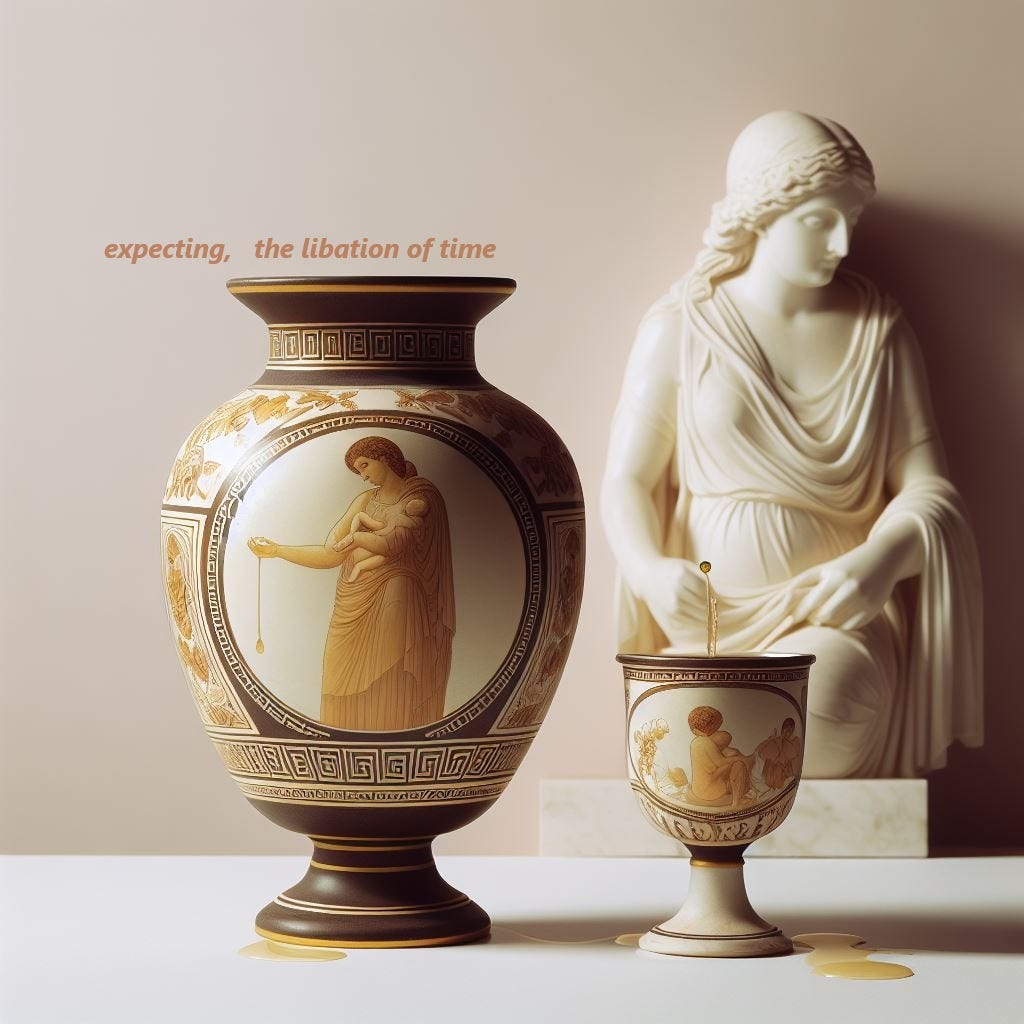I read a physical copy of Realist magic : objects, ontology, causality by Timothy Morton and enjoyed reading it, both the writing and the physicality of it in my hands. Its text block is now grubby.
But, within the discourse it is a part of, the technical use of ontology and thus object really annoyed me. Not as much as in other discourses where the word belief is substituted for the word proposition, but… —it annoyed me for two or three reasons about word usage that are somewhat involuted:
The “taylorised” or “industrialized” caste-like systems that various academic philosophies survive in (even as avowedly interdisciplinary projects) means they maintain usages they criticize, in order to be received into the house they happen to be sorted into. (Don’t get me wrong it take a great deal of effort to do this mental work). For an example of this system as an establishment (Oxford) see Ted Gioia’s Why I Ran Away from Philosophy Because of Sam Bankman-Fried.
So, often the criticism they work so hard to make, is not brought into practice, perhaps getting stuck on meanings rather than usages, metrics rather than measures, and thus improvements for the world stalls as creativity is depleted by opportunity costs.
because these practices and rituals involving meaning and metrics throw out the baby with the bathwater (the libation fails), this is annoying because frustratingly there are better usages available, even if archaic, or forgotten or… — just unfashionable.
It’s annoying because there are better ways that mean well and are of better use.
The word thing is a much better word than object.
“Ontology” is a grandiose distraction, by a self-made fool or two, leading themselves on up the grammar path by the glamour of it all, in being able to talk about “to be” or not to be. It is not a question at all.
(I’ll leave that history of word usage of “to be” for another day, suffice it to say the Polish equivalent is być… —pronounced biiitch. Also left aside, how the meanings of subject/object swap contranymically over time.)
I decided this non-question when I was about 30, and it is now nearly 30 years on. I put it in an essay or two I did for my Social Ecology masters back then. Should I look into that archive? Another day perhaps.
The thing is, once you know the etymology, i.e. understand the framework, thing is a clearer, less confusing description of the world of facts and our involvement with all of that. (See the big quote below from Justin Smith-Ruiu on Latour).
It is better worlding where we realise things are meeting/meals/moments of flow and not objects to be be-ed or not.
Where worlding = human animal activities. Including what we call applied philosophy or moral philosophy. Among many other things we do.
Objects and their ontologies are an outcome of a particular animal’s logic/grammar (shared by a number of related languages), in which that shared basic animal grammar is (further used/doubled down) as a paradigm or model for a system with a view to some universal application, a view which itself arises out of that urge to systematize or worldbuild. It all may order our lives, but there is no guarantee reality cares, even as we triple-down on system = order = stability to avoid outrageous fortune and calumny.
Of course, the demographics of usage are involved. If I am the only one who uses it that way, then it’s like spitting into the wind. So the best thing here is, in getting others to use it… —is that thing is not a neologism, no mate, because thing is a very old word. My usage of it is not a stretch, and is used similarly and for a similar purpose by others, as I only discovered but a year ago:
This then is where we start to see the full significance of the second part of the 2004 article’s title: “From Matters of Fact to Matters of Concern”. Latour is one of the few philosophers who succeeds at using etymology to illuminate, rather than to obfuscate — very much unlike Martin Heidegger, even when he is offering an explicitly Heideggerian analysis of a word that famously preoccupied his German predecessor. The word Ding, namely, is in the first instance simply the German word for “thing”, as well as being an obvious cognate to the English word. But it is also the word for what we might translate as “council” or “assembly” in the context of ancient Germanic tribal confederations. This meaning of the word is still used in the official name of the Icelandic parliament: the Alþingi. There is an Old Slavic equivalent in вече/véče (“assembly”), cognate to the modern Russian вещь/veshch’ (“thing”); and indeed the Germanic and Slavic terms are fairly close to the Latin res publica, which of course means “republic”, but also, more literally, “the public thing”.
If we take this etymology seriously, as Latour wants to do, we are left with the surprising realization that “things” are, in their original and most archaic sense, political. What we now take as things in the most normal sense, “everyday things”, things that have Dinglichkeit, do not represent some totally disconnected usage of the term, in Latour’s view, but rather are an extension of what we mean, or what the Germanic tribes meant, when we, or they, talk, or talked, about “things”. That is, a thing is a sort of coming together, not just any coming together, but one that is of particular salience for a society in its efforts to chart its course into the future. Some things are assemblies of people, while others are assemblages of material parts. Some things have spatiotemporally cohesive parts (e.g., tables), but others do not (e.g., cutlery sets). Some things might result from several different natural processes (e.g., Uluru), and come to be valued as things by nothing more than the mental representations of human beings who have rearranged none of the relevant parts constituting the material dimension of the thing. What is similar in all of these cases is that the entities in question are “matters of concern”. Some of them are also “matters of fact”: unlike Uluru, tables and cutlery sets are things that had to be “made” (facta) in order to become objects of concern. But some things can be matters of fact and fail to be matters of concern, or, to put it differently, we can fail to be concerned about them — e.g., plastic milk jugs in the ocean, which were made just like any other human artefact, but were then cast off and, at least for a while, ignored.
So, wherever you have a thing, you have a locus of care (or, if you will, a matter of concern). This is something conceptually distinct from an artefact, or from an object. In fact, Latour thinks, in order to get away from all the confusion into which the notion of “objectivity” has led us (a notion that really only takes hold as a dogma in the late nineteenth century, according to Daston and Galison in their celebrated genealogy of the concept, to which Latour provided the preface in its French translation), it might be better to retrain our focus on “things”. And it is in light of this retraining effort, I think, that his twenty-first-century shift to ecology and the climate crisis takes on a particular appeal. It was, recall, only in the mid-twentieth century that we got the first photographic images of our planet as the iconic “pale blue dot” that we all know, and love, today. Arguably, it is at this moment that the Earth itself became a thing, that is, came to be cognized and valued as a suitable locus of our care and solicitude, rather than simply, so to speak, the transcendent ground of our existence. This is the moment, also, when Lovelock’s Gaia hypothesis, which so influenced Latour’s thinking, became conceivable — it is not that no one in antiquity or later had ever suggested the world is an organic whole, but what was meant by “world”, for, e.g., the Stoics, was the cosmos, and not any particular life-supporting sphere within it. In a sense Latour’s late-career emphasis on matters of concern, or, if you will, on “truth as care”, is a continuation of the early-career work for which he was admonished as a partisan of the “post-truth” tendency. But his later work is at least somewhat less playful, more urgent, and in tone it is a universe away from the perceived cynicism of the golden age of constructionist science studies. He is speaking now not in the vein of irony, but of love.
from Justin Smith-Ruiu’s A Locus of Care: Some Memories of the Life and Work of Bruno Latour (1947-2022) 2022-10-16 (extensive quote hopes to forestall misunderstandings).
So I was “annoyed”. But what did I do about it?
It was 2019 and I took Morton’s book, and as it was under a CC license I downloaded the text and… —and replaced all the instances of the word object with the word thing.
Then I printed a few copies using POD services, scattered them about, including those for legal deposits, and also one off to the author’s university address. Never heard anything back from the house/tower. Anyways…
I made a thing of it as an object lesson.
You can download my version from here: https://archive.org/details/isthatathingnow20191012meikaloofssamorzewski
BTW 1
Which is why I think, and have said before, particularly for science-y essay books should use some sort of forking GIT-like system so they do not have to repeat the common elements to which they add their hook or twist or lead or research. One could then just indicate the forked path one has used to get to your fork. Or mine. Or both. All. That is real promise of hypertext.
Clear pathways of usage on how we make our things and thus world our bodies into place and time and stuff.
<waves hands about>
BTW 2
Recently there is a method of critique/investigation which uses the contrast of thick/thin of X. It’s useful, because objects/subjects.
The thick and the thin of rules, of facts, of social facts (where ontology can still raise its ugly head) to cover what the word thing does so admirably well. If you know about it…
It’s a thing so it’s bound to have contexts thick as thieves, and routines thin as run of the mill.
(I think the usage thin/thick comes from some social science I have yet to follow-up, and thus track down, but is even appearing on my youtube fed algorithm, and in my current reading: Rules by Lorraine Daston who may not have mentioned where is is from either so… it’s like all the cool kids are using words I know little of)
Newer version at whyweshould.loofs-samorzewski.com






Of course, it may very well be that a thing becomes so (acquires its 'thingness' so to speak) only when through a 'mysterious process' a non-thing rises. Both rise simultaneously, but perception gives them a time stamp.